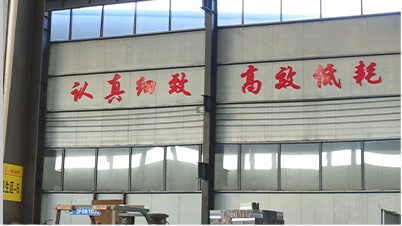machine shifting equipment
The Evolution and Importance of Machine Shifting Equipment
In today's fast-paced industrial world, the effective and efficient movement of heavy machinery is crucial. The demands of manufacturing, construction, and logistics sectors require specialized tools and equipment that ensure the safe and streamlined shifting of machines. This need has given rise to a variety of machine shifting equipment, each designed to facilitate the movement of heavy loads with minimal risk and maximum efficiency.
Understanding Machine Shifting Equipment
Machine shifting equipment encompasses a range of tools designed to lift, move, and relocate heavy machinery. Some of the most common types include hydraulic jacks, pallet jacks, dollies, skates, and cranes. These tools are engineered to handle substantial weight while maintaining stability during the shifting process, which is essential to prevent accidents and equipment damage.
For instance, hydraulic jacks use the principles of hydraulics to lift heavy machinery effortlessly, allowing for the repositioning of machines without the need for excessive manual labor. Dollies and skates, on the other hand, facilitate the rolling movement of equipment across flat surfaces, making it easier to transport machinery from one location to another within a facility.
Safety Considerations
When dealing with machine shifting, safety is paramount. Operators must understand the limits of the equipment they are using, ensuring that the load does not exceed the recommended weight capacity. Additionally, proper training on how to use the equipment safely can prevent accidents and ensure a smooth operation.
Furthermore, the environment where the shifting occurs plays a significant role in safety. Adequate space, clear pathways, and proper signage can mitigate risks associated with moving heavy machinery. Operators should also wear appropriate personal protective equipment (PPE) to safeguard themselves against potential hazards.
machine shifting equipment

Advances in Technology
The evolution of machine shifting equipment has been significantly driven by advancements in technology
. Modern equipment often comes equipped with features that enhance usability, such as electric motors and automated functions. These innovations not only streamline the shifting process but also reduce the physical toll on workers, making it a more manageable task.For example, electric pallet jacks and automated guided vehicles (AGVs) are becoming increasingly popular in warehouses and manufacturing facilities. These technologies allow for the fast and efficient movement of heavy materials with minimal human intervention. As automation continues to advance, we can expect even more sophisticated machine shifting solutions that will further enhance efficiency and safety.
Economic Implications
Investing in high-quality machine shifting equipment can have significant economic benefits for businesses. By improving the efficiency of equipment movement, companies can reduce downtime and enhance productivity. Moreover, minimizing the risk of accidents and damage can lead to substantial savings in repair costs and liability claims.
In an era where operational efficiency is critical, companies that prioritize effective machine shifting processes position themselves as competitive players in their respective industries.
Conclusion
In conclusion, machine shifting equipment plays a vital role in modern industrial operations. Its importance cannot be overstated, as it ensures that heavy machinery is moved safely and efficiently. As technology continues to advance, businesses must stay informed about the latest developments in machine shifting equipment to optimize their operations and maintain a safe working environment. A well-planned investment in this equipment not only boosts productivity but also safeguards employees and machinery, driving overall success in the competitive industrial landscape.
-
Portable 2000 lb Gantry Crane | Heavy-Duty & AdjustableNewsAug.30,2025
-
Versatile Lifting Solutions with Gantry and Overhead CranesNewsAug.29,2025
-
The Versatile Mobile Gantry Crane SolutionNewsAug.29,2025
-
Reliable Movement with Heavy Machinery Skates and RollersNewsAug.29,2025
-
Reliable Lifting Performance with 2000 lb Gantry Crane and 2 Ton Overhead SystemsNewsAug.29,2025
-
Maximize Lifting Efficiency with PML Magnetic LiftersNewsAug.29,2025
-
Efficient Relocation Starts with Reliable Machinery MoversNewsAug.29,2025
